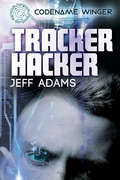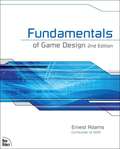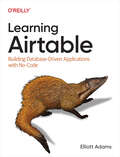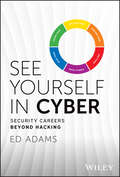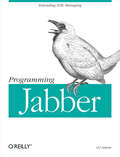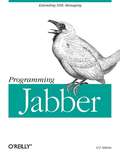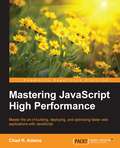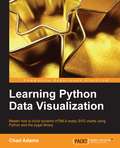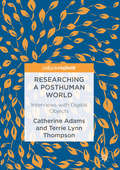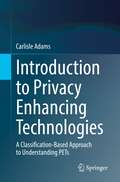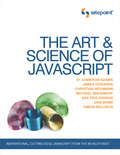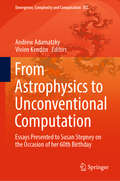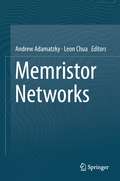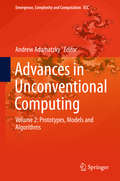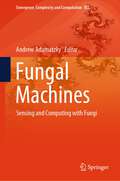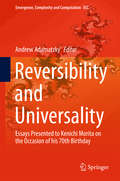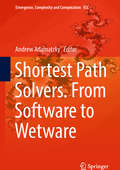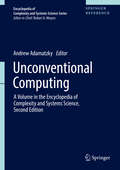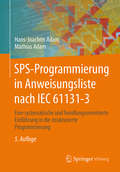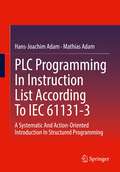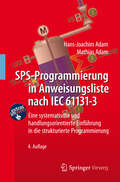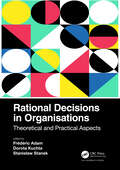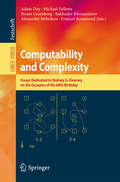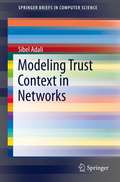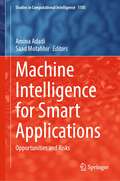- Table View
- List View
Tracker Hacker (Codename: Winger #1)
by Jeff AdamsCodename: Winger OneTheo Reese is just an average high school student with a passion for hockey and an uncanny talent when it comes to computers… at least on the surface. What his teammates, fellow students, and even his boyfriend don’t realize is that Theo leads a double life. When he’s not putting up his facade of normal, Theo is working as an agent for Tactical Operational Support, where his technical genius is more than just a hobby. At sixteen he is responsible for helping agents in the field and keeping the TOS network secure. It’s a secret he has to keep—from everyone. But secrecy becomes even harder when a hacker compromises the system TOS uses to track its agents and Theo’s dad goes missing. Theo must find him and stop the hacker, which means leaving the comfort of his computer screen and venturing into a very real and very deadly world. And if that’s not enough to deal with, all the secrecy is really putting a strain on Theo’s love life.
Fundamentals of Game Design (2nd Edition)
by Ernest AdamsA definitive guide to game theory and design by an industry insider. Comprehensive overview of video game design as it is done in industry. Chapters devoted to each of the major game genres. Exercises of real practical value to help hone your skills. Fundamentals of Game Design, Second Edition teaches the essential theory needed to design entertaining and enjoyable video games. It addresses such key issues as concept development, gameplay design, core mechanics, user interfaces, storytelling, and balancing. The book is aimed at both students in beginning game design courses and anyone that wants to get up-to-speed on the latest game design theory and practice.
Learning Airtable: Building Database-driven Applications With No-code
by Elliott AdamsGet a concise yet comprehensive overview of Airtable, one of the most versatile platforms to emerge from the no-code movement. Whether you're planning a new project, sharing data analysis within your organization, tracking a detailed initiative among stakeholders, or dealing with any other project that requires well-structured collaboration, this practical book shows you how Airtable is an accessible tool to tackle these challenges.Author Elliott Adams guides you through the process of structuring your data in a relational database, creating automations based on changes to data in Airtable, and building user-friendly interfaces for no-code applications. This showcases how Airtable is superior to the typical options of either non-developers using spreadsheets or making large investments in time-consuming application development.With this book, you will:Learn how Airtable can reduce the need for custom-built applicationsUse Airtable to replace internal tools such as spreadsheetsBuild applications utilizing relational data--without any knowledge of software programmingEvaluate whether you can build a solution on Airtable rather than purchasing softwareUnderstand the limitations of the Airtable platform when compared with writing a software application from scratch
See Yourself in Cyber: Security Careers Beyond Hacking
by Ed AdamsA one-of-a-kind discussion of how to integrate cybersecurity into every facet of your organization In See Yourself in Cyber: Security Careers Beyond Hacking, information security strategist and educator Ed Adams delivers a unique and insightful discussion of the many different ways the people in your organization—inhabiting a variety of roles not traditionally associated with cybersecurity—can contribute to improving its cybersecurity backbone. You’ll discover how developers, DevOps professionals, managers, and others can strengthen your cybersecurity. You’ll also find out how improving your firm’s diversity and inclusion can have dramatically positive effects on your team’s talent. Using the familiar analogy of the color wheel, the author explains the modern roles and responsibilities of practitioners who operate within each “slice.” He also includes: Real-world examples and case studies that demonstrate the application of the ideas discussed in the book Many interviews with established industry leaders in a variety of disciplines explaining what non-security professionals can do to improve cybersecurity Actionable strategies and specific methodologies for professionals working in several different fields interested in meeting their cybersecurity obligationsPerfect for managers, directors, executives, and other business leaders, See Yourself in Cyber: Security Careers Beyond Hacking is also an ideal resource for policymakers, regulators, and compliance professionals.
Programming Jabber
by Dj AdamsJabber is a set of protocols expressed in XML, and an extensible framework that allows people and applications to exchange all sorts of information, from simple text messages to being used to extend the backbone of an enterprise data system. Jabber gives you the power to build applications that have identity, presence, and that can take part in conversations. Programming Jabber offers developers a chance to learn and understand the Jabber technology and protocol from an implementer's point of view. Detailed information of each part of the Jabber protocol is introduced, explained, and discussed in the form of mini-projects, or simple and extended examples. Programming Jabber provides this foundation by: Showing you how to install and configure the Jabber server Providing a detailed overview of the server architecture and configuration options Covering the core Jabber technologies such as XML streams and Jabber identifiers Referencing all of Jabber's XML namespaces Examining the client registration and authentication phases Showing how to deploy your own Jabber-based messaging solutions Demonstrating how to embed XML-RPC-style call mechanisms into Jabber Programming Jabber is divided into two parts. The first part serves as an introduction to Jabber; you'll learn about its features, why it's more than an IM system, and how to install and configure a Jabber server of your own. The second part provides detailed information about the Jabber protocol, and a series of practical examples, which can be used to solve everyday problems. The examples, in Perl, Python, and Java, use various Jabber features as a way of illustrating parts of the protocol. Programming Jabber provides the foundation and framework for developers to hit the ground running, and is the essential book on Jabber.
Programming Jabber
by D. J. AdamsProgramming Jabber offers developers a chance to learn and understand the Jabber technology and protocol from an implementer's point of view. Detailed information of each part of the Jabber protocol is introduced, explained, and discussed in the form of mini-projects, or simple and extended examples in Perl, Python, and Java. This book provides the foundation and framework for developers to hit the ground running, and is the essential book on Jabber.
Mastering JavaScript High Performance
by Chad R. AdamsIf you are a JavaScript developer with some experience in development and want to increase the performance of JavaScript projects by building faster web apps, then this book is for you. You should know the basic concepts of JavaScript.
Learning Python Data Visualization
by Chad AdamsIf you are a Python novice or an experienced developer and want to explore data visualization libraries, then this is the book for you. No prior charting or graphics experience is needed.
Researching a Posthuman World: Interviews with Digital Objects
by Catherine Adams Terrie Lynn ThompsonThis book provides a practical approach for applying posthumanist insights to qualitative research inquiry. Adams and Thompson invite readers to embrace their inner – and outer – cyborg as they consider how today’s professional practices and everyday ways of being are increasingly intertwined with digital technologies. Drawing on posthuman scholarship, the authors offer eight heuristics for “interviewing objects” in an effort to reveal the unique – and sometimes contradictory – contributions the digital is making to work, learning and living. The heuristics are drawn from Actor Network Theory, phenomenology, postphenomenology, critical media studies and related sociomaterial approaches. This text offers a theoretically informed yet practical approach for asking critical questions of digital and non-digital things in professional and personal spaces, and ultimately, for considering the ethical and political implications of a technology mediated world. A thought-provoking and innovative study, this book will be of great interest to scholars and researchers of technology studies, digital learning, and sociology.
Introduction to Privacy Enhancing Technologies: A Classification-Based Approach to Understanding PETs
by Carlisle AdamsThis textbook provides a unique lens through which the myriad of existing Privacy Enhancing Technologies (PETs) can be easily comprehended and appreciated. It answers key privacy-centered questions with clear and detailed explanations.Why is privacy important? How and why is your privacy being eroded and what risks can this pose for you? What are some tools for protecting your privacy in online environments? How can these tools be understood, compared, and evaluated? What steps can you take to gain more control over your personal data?This book addresses the above questions by focusing on three fundamental elements:It introduces a simple classification of PETs that allows their similarities and differences to be highlighted and analyzed;It describes several specific PETs in each class, including both foundational technologies and important recent additions to the field;It explains how to use this classification to determine which privacy goals are actually achievable in a given real-world environment. Once the goals are known, this allows the most appropriate PETs to be selected in order to add the desired privacy protection to the target environment. To illustrate, the book examines the use of PETs in conjunction with various security technologies, with the legal infrastructure, and with communication and computing technologies such as Software Defined Networking (SDN) and Machine Learning (ML).Designed as an introductory textbook on PETs, this book is essential reading for graduate-level students in computer science and related fields, prospective PETs researchers, privacy advocates, and anyone interested in technologies to protect privacy in online environments.
The Art & Science of JavaScript: Inspirational, Cutting-Edge JavaScript From the World's Best
by Cameron Adams James Edwards Christian Heilmann Michael Mahemoff Ara Pehlivanian Dan Webb Simon WillisonWe've assembled seven of the greatest minds in modern JavaScript to teach you the most inspirational techniques you'll ever use. From creating impressive mashups and stunning, dynamic graphics, to more subtle user-experience enhancements, you're about to be amazed by the true potential of this powerful language.With an all star line-up of authors including James Edwards, Michael Mahemoff, Ara Pehlivanian, Cameron Adams, Dan Webb, Christian Heilmann, and Simon Willison, this superb book will show you how to:Create a slick Google Maps and Flickr mashup.Build your own fully accessible 3D maze.Create stunning vector graphics using the canvas element.Have some fun with draggable and sortable table columns.Give your site some extra personality with client-side badges.Write better code faster using metaprogramming techniques.Become a debugging expert using pro-level Firebug tricks.Presented in full color, all of the books solutions are cross-browser and cross-platform compatible. Best of all, all the code used in the book is available for you to download and experiment with.Who Should Read This Book?This book is targeted at intermediate JavaScript developers who want to take their JavaScript skills to the next level without sacrificing web accessibility or best practice.If you have even a small amount of experience with JavaScript, and are comfortable enough programming in another language such as PHP or Java, you'll be just fine - we'll hold your hand along the way, and all of the code is available for you to download and experiment with on your own.
From Astrophysics to Unconventional Computation: Essays Presented to Susan Stepney on the Occasion of her 60th Birthday (Emergence, Complexity and Computation #35)
by Andrew Adamatzky Vivien KendonThis Festschrift is a tribute to Susan Stepney’s ideas and achievements in the areas of computer science, formal specifications and proofs, complex systems, unconventional computing, artificial chemistry, and artificial life. All chapters were written by internationally recognised leaders in computer science, physics, mathematics, and engineering. The book shares fascinating ideas, algorithms and implementations related to the formal specification of programming languages and applications, behavioural inheritance, modelling and analysis of complex systems, parallel computing and non-universality, growing cities, artificial life, evolving artificial neural networks, and unconventional computing. Accordingly, it offers an insightful and enjoyable work for readers from all walks of life, from undergraduate students to university professors, from mathematicians, computers scientists and engineers to physicists, chemists and biologists.
Memristor Networks
by Andrew Adamatzky Leon ChuaUsing memristors one can achieve circuit functionalities that are not possible to establish with resistors, capacitors and inductors, therefore the memristor is of great pragmatic usefulness. Potential unique applications of memristors are in spintronic devices, ultra-dense information storage, neuromorphic circuits and programmable electronics. Memristor Networks focuses on the design, fabrication, modelling of and implementation of computation in spatially extended discrete media with many memristors. Top experts in computer science, mathematics, electronics, physics and computer engineering present foundations of the memristor theory and applications, demonstrate how to design neuromorphic network architectures based on memristor assembles, analyse varieties of the dynamic behaviour of memristive networks and show how to realise computing devices from memristors. All aspects of memristor networks are presented in detail, in a fully accessible style. An indispensable source of information and an inspiring reference text, Memristor Networks is an invaluable resource for future generations of computer scientists, mathematicians, physicists and engineers.
Advances in Unconventional Computing: Volume 2: Prototypes, Models and Algorithms (Emergence, Complexity and Computation #23)
by Andrew AdamatzkyThe unconventional computing is a niche for interdisciplinary science, cross-bred of computer science, physics, mathematics, chemistry, electronic engineering, biology, material science and nanotechnology. The aims of this book are to uncover and exploit principles and mechanisms of information processing in and functional properties of physical, chemical and living systems to develop efficient algorithms, design optimal architectures and manufacture working prototypes of future and emergent computing devices. This first volume presents theoretical foundations of the future and emergent computing paradigms and architectures. The topics covered are computability, (non-)universality and complexity of computation; physics of computation, analog and quantum computing; reversible and asynchronous devices; cellular automata and other mathematical machines; P-systems and cellular computing; infinity and spatial computation; chemical and reservoir computing. The book is the encyclopedia, the first ever complete authoritative account, of the theoretical and experimental findings in the unconventional computing written by the world leaders in the field. All chapters are self-contains, no specialist background is required to appreciate ideas, findings, constructs and designs presented. This treatise in unconventional computing appeals to readers from all walks of life, from high-school pupils to university professors, from mathematicians, computers scientists and engineers to chemists and biologists.
Fungal Machines: Sensing and Computing with Fungi (Emergence, Complexity and Computation #47)
by Andrew AdamatzkyThis unique book explores fungi as sensors, electronic devices, and potential future computers, offering eco-friendly alternatives to traditional electronics. Fungi are ancient, widely distributed organisms ranging from microscopic single cells to massive mycelium spanning hectares. They possess senses similar to humans, detecting light, chemicals, gases, gravity, and electric fields. It covers fungal electrical activity, sensors, electronics, computing prototypes, and fungal language. Authored by leading experts from diverse fields, the book is accessible to readers of all backgrounds, from high-schoolers to professors. It reveals the remarkable potential of fungal machines while minimizing environmental impact.
Reversibility and Universality: Essays Presented To Kenichi Morita On The Occasion Of His 70th Birthday (Emergence, Complexity And Computation Ser. #30)
by Andrew AdamatzkyThis book is a tribute to Kenichi Morita’s ideas and achievements in theoretical computer science, reversibility and computationally universal mathematical machines. It offers a unique source of information on universality and reversibility in computation and is an indispensable book for computer scientists, mathematicians, physicists and engineers. Morita is renowned for his works on two-dimensional language accepting automata, complexity of Turing machines, universality of cellular automata, regular and context-free array grammars, and undecidability. His high-impact works include findings on parallel generation and parsing of array languages by means of reversible automata, construction of a reversible automaton from Fredkin gates, solving a firing squad synchronization problem in reversible cellular automata, self-reproduction in reversible cellular spaces, universal reversible two-counter machines, solution of nondeterministic polynomial (NP) problems in hyperbolic cellular automata, reversible P-systems, a new universal reversible logic element with memory, and reversibility in asynchronous cellular automata.Kenichi Morita’s achievements in reversibility, universality and theory of computation are celebrated in over twenty high-profile contributions from his colleagues, collaborators, students and friends. The theoretical constructs presented in this book are amazing in their diversity and depth of intellectual insight, addressing: queue automata, hyperbolic cellular automata, Abelian invertible automata, number-conserving cellular automata, Brownian circuits, chemical automata, logical gates implemented via glider collisions, computation in swarm networks, picture arrays, universal reversible counter machines, input-position-restricted models of language acceptors, descriptional complexity and persistence of cellular automata, partitioned cellular automata, firing squad synchronization algorithms, reversible asynchronous automata, reversible simulations of ranking trees, Shor’s factorization algorithms, and power consumption of cellular automata.
Shortest Path Solvers. From Software to Wetware (Emergence, Complexity And Computation Ser. #32)
by Andrew AdamatzkyThis book offers advanced parallel and distributed algorithms and experimental laboratory prototypes of unconventional shortest path solvers. In addition, it presents novel and unique algorithms of solving shortest problems in massively parallel cellular automaton machines. The shortest path problem is a fundamental and classical problem in graph theory and computer science and is frequently applied in the contexts of transport and logistics, telecommunication networks, virtual reality and gaming, geometry, and social networks analysis. Software implementations include distance-vector algorithms for distributed path computation in dynamics networks, parallel solutions of the constrained shortest path problem, and application of the shortest path solutions in gathering robotic swarms. Massively parallel algorithms utilise cellular automata, where a shortest path is computed either via matrix multiplication in automaton arrays, or via the representation of data graphs in automaton lattices and using the propagation of wave-like patterns. Unconventional shortest path solvers are presented in computer models of foraging behaviour and protoplasmic network optimisation by the slime mould Physarum polycephalum and fluidic devices, while experimental laboratory prototypes of path solvers using chemical media, flows and droplets, and electrical current are also highlighted. The book will be a pleasure to explore for readers from all walks of life, from undergraduate students to university professors, from mathematicians, computers scientists and engineers to chemists and biologists.
Unconventional Computing: A Volume in the Encyclopedia of Complexity and Systems Science, Second Edition (Encyclopedia of Complexity and Systems Science Series #22)
by Andrew AdamatzkyThis volume of the Encyclopedia of Complexity and Systems Science, Second Edition, is a unique collection of concise overviews of state-of-art, theoretical and experimental findings, prepared by the world leaders in unconventional computing. Topics covered include bacterial computing, artificial chemistry, amorphous computing, computing with Solitons, evolution in materio, immune computing, mechanical computing, molecular automata, membrane computing, bio-inspired metaheuristics, reversible computing, sound and music computing, enzyme-based computing, structural machines, reservoir computing, infinity computing, biomolecular data structures, slime mold computing, nanocomputers, analog computers, DNA computing, novel hardware, thermodynamics of computation, and quantum and optical computing. Topics added to the second edition include: social algorithms, unconventional computational problems, enzyme-based computing, inductive Turing machines, reservoir computing, Grossone Infinity computing, slime mould computing, biomolecular data structures, parallelization of bio-inspired unconventional computing, and photonic computing.Unconventional computing is a cross-breed of computer science, physics, mathematics, chemistry, electronic engineering, biology, materials science and nanotechnology. The aims are to uncover and exploit principles and mechanisms of information processing in, and functional properties of, physical, chemical and living systems, with the goal to develop efficient algorithms, design optimal architectures and manufacture working prototypes of future and emergent computing devices.
SPS-Programmierung in Anweisungsliste nach IEC 61131-3
by Mathias Adam Hans-Joachim AdamDas Lehr- und Übungsbuch vermittelt solides Grundwissen und umfassende praktische Fähigkeiten bei der SPS-Programmierung. Im Anschluss an vier Kapitel, die die verschiedenen Zahlensysteme sowie die Digitaltechnik behandeln, folgen Programmierbeispiele: Schaltnetze, Signalspeicher, Zeitfunktionen, Zähler, Funktionsbausteine und Funktionen, Programmstrukturen, Ablaufsteuerungen u. a. Mit der im Internet bereitgestellten Simulationssoftware und den Musterlösungen können Leser das erworbene Wissen direkt anwenden.
PLC Programming In Instruction List According To IEC 61131-3: A Systematic And Action-Oriented Introduction In Structured Programming
by Hans-Joachim Adam Mathias AdamThis textbook and exercise book provides a solid basic knowledge and comprehensive practical skills in dealing with PLC programming. Numerous exercises help to deepen the material. With the accompanying simulation software and sample solutions, the acquired knowledge can be applied immediately. The software can be downloaded via the Internet. The knowledge of number systems and digital technology conveyed in the book is an important prerequisite for skilful and clever PLC programming. The programming language used, "Instruction list according to IEC 61131-3", provides the best insights into the functioning of a PLC. The didactically prepared programming examples for switching networks, signal memories, time functions, counters, function blocks and functions, program structures, sequence controls, data types and much more enable systematic learning of programming. The 5th, corrected edition experiences an expansion of the exercises with a didactically prepared project for the control of a mountain railway. The associated simulation software "PLC-lite" enables the realisation of controls for the mountain railway and the "realistic" representation of the cableway movements on the screen.
SPS-Programmierung in Anweisungsliste nach IEC 61131-3: Eine systematische und handlungsorientierte Einführung in die strukturierte Programmierung
by Hans-Joachim Adam Mathias AdamDas Lehr- und Übungsbuch vermittelt solides Grundwissen und umfassende praktische Fähigkeiten bei der SPS-Programmierung. Im Anschluss an vier Kapitel, die die verschiedenen Zahlensysteme sowie die Digitaltechnik behandeln, folgen Programmierbeispiele: Schaltnetze, Signalspeicher, Zeitfunktionen, Zähler, Funktionsbausteine und Funktionen, Programmstrukturen, Ablaufsteuerungen u. a. Mit der im Internet bereitgestellten Simulationssoftware und den Musterlösungen können Leser das erworbene Wissen direkt anwenden.
Rational Decisions in Organisations: Theoretical and Practical Aspects
by Frédéric AdamManagers in organisations must make rational decisions. Rational decision making is the opposite of intuitive decision making. It is a strict procedure utilising objective knowledge and logic. It involves identifying the problem to solve, gathering facts, identifying options and outcomes, analysing them, considering all the relationships and selecting the decision. Rational decision making requires support: methods and software tools. The identification of the problem to solve needs methods that would measure and evaluate the current situation. Identification and evaluation of options and analysis of the available possibilities involves analysis and optimisation methods. Incorporating intuition into rational decision making needs adequate methods that would translate ideas or observed behaviours into hard data. Communication, observation and opinions recording is hardly possible today without adequate software. Information and data that form the input, intermediate variables and the output must be stored, managed and made accessible in a user-friendly manner. Rational Decisions in Organisations: Theoretical and Practical Aspects presents selected recent developments in the support of the widely understood rational decision making in organisations, illustrated through case studies. The book shows not only the variety of perspectives involved in decision making, but also the variety of domains where rational decision support systems are needed. The case studies present decision making by medical doctors, students and managers of various universities, IT project teams, construction companies, banks and small and large manufacturing companies. Covering the richness of relationships in which the decisions should and must be taken, the book illustrates how modern organisations operate in chains and networks; they have multiple responsibilities, including social, legal, business and ethical duties. Nowadays, managers in organisations can make transparent decisions and consider a multitude of stakeholders and their diverse features, incorporating diverse criteria, using multiple types and drivers of information and decision-making patterns, and referring to numerous lessons learned. As the book makes clear, the marriage of theoretical ideas with the possibilities offered by technology can make the decisions in organisations more rational and, at the same time, more human.
Computability and Complexity: Essays Dedicated to Rodney G. Downey on the Occasion of His 60th Birthday (Lecture Notes in Computer Science #10010)
by Adam Day, Michael Fellows, Noam Greenberg, Bakhadyr Khoussainov, Alexander Melnikov and Frances RosamondThis Festschrift is published in honor of Rodney G. Downey, eminent logician and computer scientist, surfer and Scottish country dancer, on the occasion of his 60th birthday.The Festschrift contains papers and laudations that showcase the broad and important scientific, leadership and mentoring contributions made by Rod during his distinguished career. The volume contains 42 papers presenting original unpublished research, or expository and survey results in Turing degrees, computably enumerable sets, computable algebra, computable model theory, algorithmic randomness, reverse mathematics, and parameterized complexity, all areas in which Rod Downey has had significant interests and influence. The volume contains several surveys that make the various areas accessible to non-specialists while also including some proofs that illustrate the flavor of the fields.
Modeling Trust Context in Networks
by Sibel AdaliWe make complex decisions every day, requiring trust in many different entities for different reasons. These decisions are not made by combining many isolated trust evaluations. Many interlocking factors play a role, each dynamically impacting the others. In this brief, "trust context" is defined as the system level description of how the trust evaluation process unfolds. Networks today are part of almost all human activity, supporting and shaping it. Applications increasingly incorporate new interdependencies and new trust contexts. Social networks connect people and organizations throughout the globe in cooperative and competitive activities. Information is created and consumed at a global scale. Systems, devices, and sensors create and process data, manage physical systems, and participate in interactions with other entities, people and systems alike. To study trust in such applications, we need a multi-disciplinary approach. This book reviews the components of the trust context through a broad review of recent literature in many different fields of study. Common threads relevant to the trust context across many application domains are also illustrated.
Machine Intelligence for Smart Applications: Opportunities and Risks (Studies in Computational Intelligence #1105)
by Amina Adadi Saad MotahhirThis book provides insights into recent advances in Machine Intelligence (MI) and related technologies, identifies risks and challenges that are, or could be, slowing down overall MI mainstream adoption and innovation efforts, and discusses potential solutions to address these limitations. All these aspects are explored through the lens of smart applications. The book navigates the landscape of the most recent, prominent, and impactful MI smart applications. The broad set of smart applications for MI is organized into four themes covering all areas of the economy and social life, namely (i) Smart Environment, (ii) Smart Social Living, (iii) Smart Business and Manufacturing, and (iv) Smart Government. The book examines not only present smart applications but also takes a look at how MI may potentially be applied in the future. This book is aimed at researchers and postgraduate students in applied artificial intelligence and allied technologies. The book is also valuable for practitioners, and it serves as a bridge between researchers and practitioners. It also helps connect researchers interested in MI technologies who come from different social and business disciplines and who can benefit from sharing ideas and results.
